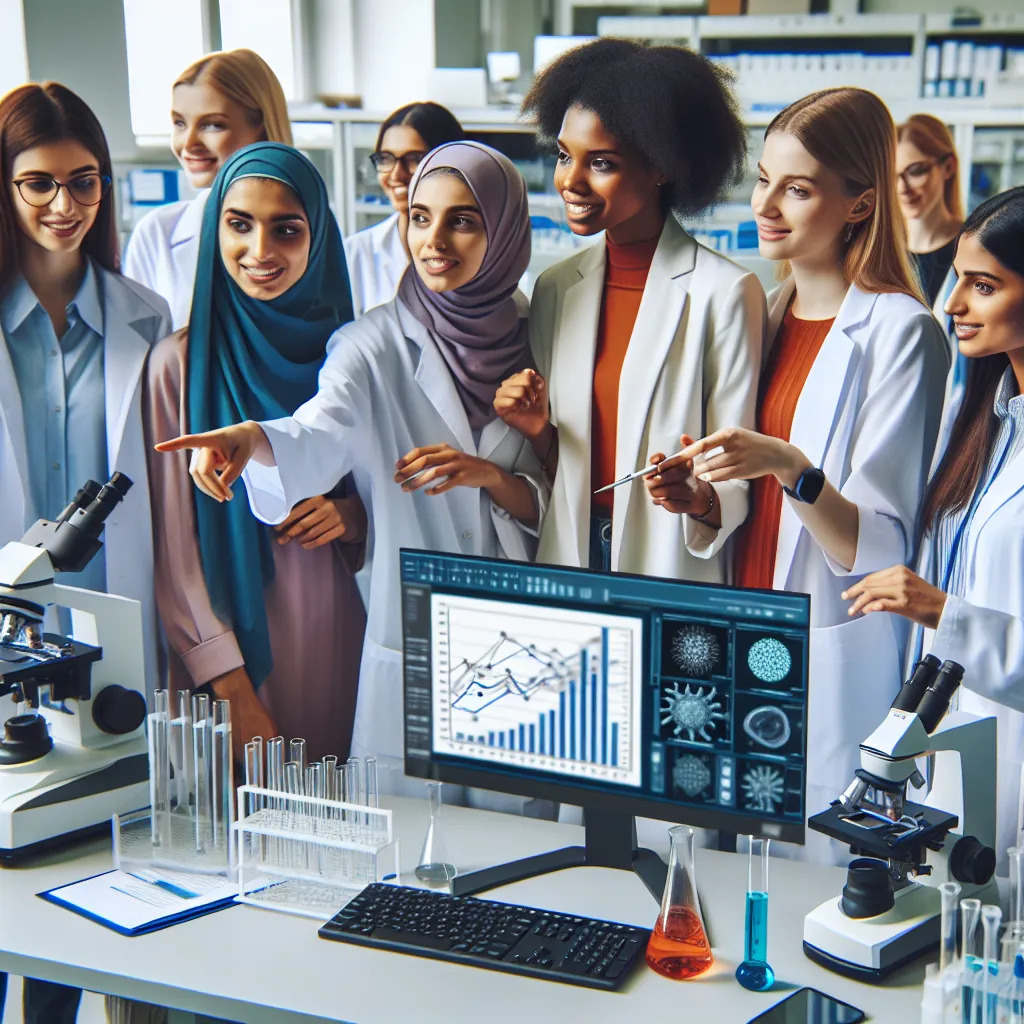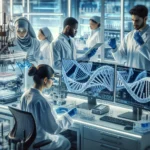Are you preparing for the IELTS Reading test and looking to improve your skills on topics related to gender equality and scientific progress? This comprehensive practice test focuses on “The role of women in science and technology,” providing you with authentic passages and questions to enhance your reading comprehension and test-taking strategies.
 Women in STEM careers
Women in STEM careers
Introduction
The IELTS Reading test is a crucial component of the IELTS exam, assessing your ability to understand and analyze complex texts. In this practice session, we’ll explore the contributions of women to scientific and technological advancements, a topic that frequently appears in IELTS exams and reflects current global discussions on gender equality in STEM fields.
IELTS Reading Practice Test
Passage 1 – Easy Text
Women Pioneers in Science and Technology
Throughout history, women have made significant contributions to the fields of science and technology, often in the face of considerable societal barriers. Despite these obstacles, many women have persevered and left an indelible mark on their respective fields.
One such pioneer was Marie Curie, a Polish-French physicist and chemist who conducted groundbreaking research on radioactivity. Curie was the first woman to win a Nobel Prize and remains the only person to have won Nobel Prizes in two scientific fields. Her discoveries paved the way for advancements in cancer treatment and medical imaging.
In the realm of computer science, Ada Lovelace is widely recognized as the world’s first computer programmer. Working in the mid-19th century, Lovelace wrote the first algorithm intended to be processed by a machine, anticipating the potential of computers to go beyond mere calculation.
More recently, Dr. Frances Arnold became the first American woman to win the Nobel Prize in Chemistry in 2018. Her work on the directed evolution of enzymes has led to more environmentally friendly manufacturing of chemical substances, such as pharmaceuticals and renewable fuels.
These women, among many others, have not only advanced scientific knowledge but also served as role models for future generations of female scientists and engineers. Their achievements highlight the importance of diversity in scientific research and the potential for innovation when barriers to participation are removed.
Despite these successes, women remain underrepresented in many STEM fields. Efforts to encourage girls and young women to pursue careers in science and technology continue, with initiatives focused on education, mentorship, and creating inclusive work environments. As more women enter these fields, it is likely that we will see an acceleration of scientific progress and technological innovation, benefiting society as a whole.
Questions 1-7
Do the following statements agree with the information given in the passage?
Write:
TRUE if the statement agrees with the information
FALSE if the statement contradicts the information
NOT GIVEN if there is no information on this
- Marie Curie won Nobel Prizes in Physics and Chemistry.
- Ada Lovelace lived and worked in the 20th century.
- Dr. Frances Arnold’s work has applications in the pharmaceutical industry.
- All Nobel Prizes in science have now been won by an equal number of men and women.
- Initiatives to encourage women in STEM focus solely on education.
- Increased diversity in STEM fields is expected to accelerate scientific progress.
- The passage suggests that societal barriers for women in science no longer exist.
Passage 2 – Medium Text
Breaking the Glass Ceiling: Women’s Participation in Modern Science and Technology
The landscape of science and technology has undergone significant transformations in recent decades, with women playing an increasingly prominent role in shaping the future of these fields. However, the journey towards equality has been fraught with challenges, and many obstacles remain to be overcome.
Historically, women’s contributions to science and technology were often overlooked or attributed to their male colleagues. The phenomenon known as the “Matilda effect” describes the systematic denial of credit to women scientists, a practice that has had far-reaching consequences for gender representation in STEM fields. Despite these setbacks, women have persevered, making groundbreaking discoveries and innovations that have revolutionized our understanding of the world.
In the 21st century, there has been a concerted effort to address the gender imbalance in STEM. Organizations and institutions worldwide have implemented programs aimed at encouraging girls to pursue scientific education from an early age. These initiatives range from hands-on workshops and mentorship programs to scholarships and grants specifically targeted at women in science and technology.
The impact of these efforts is becoming increasingly apparent. In many countries, the proportion of women earning STEM degrees has risen steadily over the past few decades. For instance, in the United States, women now earn more than half of all bachelor’s degrees in biological sciences. However, disparities persist in fields such as computer science and engineering, where women remain significantly underrepresented.
The importance of diversity in scientific research cannot be overstated. Studies have shown that diverse teams are more innovative and produce higher-quality scientific work. Women bring unique perspectives and experiences to the table, often identifying research questions and approaches that might otherwise be overlooked. This diversity of thought is crucial for addressing complex global challenges, from climate change to public health crises.
Moreover, the increasing visibility of women in leadership positions within scientific institutions and tech companies serves as inspiration for younger generations. Role models such as Dr. Jennifer Doudna, co-inventor of the CRISPR gene-editing technique, and Ginni Rometty, former CEO of IBM, demonstrate the heights that women can achieve in these fields.
However, significant challenges remain. The “leaky pipeline” phenomenon, where women drop out of STEM careers at higher rates than men, continues to be a concern. Factors contributing to this issue include workplace discrimination, lack of work-life balance, and persistent stereotypes about women’s abilities in math and science.
Addressing these challenges requires a multifaceted approach. Policies promoting gender equality in the workplace, such as paid parental leave and flexible working hours, can help retain women in STEM careers. Additionally, efforts to combat unconscious bias in hiring and promotion processes are crucial for ensuring that women have equal opportunities for advancement.
The role of women in science and technology is not just a matter of equality; it is essential for driving innovation and solving global problems. As barriers continue to be dismantled and more women enter and thrive in STEM fields, we can anticipate a future where scientific discovery and technological advancement benefit from the full spectrum of human talent and creativity.
Questions 8-13
Choose the correct letter, A, B, C, or D.
-
The “Matilda effect” refers to:
A) Women’s tendency to avoid science careers
B) The systematic denial of credit to women scientists
C) A scholarship program for women in STEM
D) The effect of mentorship on young scientists -
According to the passage, in the United States:
A) Women earn the majority of all STEM degrees
B) Women are equally represented in all STEM fields
C) Women earn more than half of biological science degrees
D) The number of women in STEM has decreased -
The passage suggests that diverse teams in science:
A) Are less efficient
B) Produce higher-quality work
C) Focus only on gender-specific issues
D) Are difficult to manage -
The “leaky pipeline” phenomenon refers to:
A) Women entering STEM fields at higher rates
B) The loss of women from STEM careers over time
C) A new technology for water conservation
D) The flow of funding in scientific research -
Which of the following is NOT mentioned as a factor contributing to the “leaky pipeline”?
A) Workplace discrimination
B) Lack of work-life balance
C) Lower salaries for women
D) Stereotypes about women’s abilities -
The passage concludes that increasing women’s participation in STEM is important because:
A) It will lead to more funding for scientific research
B) It will help solve the problem of climate change
C) It is essential for driving innovation and solving global problems
D) It will create more job opportunities in the tech industry
Passage 3 – Hard Text
The Paradigm Shift: Redefining Gender Roles in the Digital Age of Science and Technology
The digital revolution has ushered in an era of unprecedented technological advancement, fundamentally altering the landscape of scientific research and innovation. This transformation has coincided with—and in many ways catalyzed—a significant shift in gender roles within the realm of science and technology. The confluence of these trends presents both opportunities and challenges for women’s participation and leadership in STEM fields, necessitating a nuanced examination of the complex interplay between gender, technology, and scientific progress.
Historically, the scientific establishment has been dominated by male voices and perspectives, a legacy that continues to influence contemporary research priorities and methodologies. However, the democratization of information and the proliferation of digital tools have begun to erode traditional barriers to entry, creating new avenues for women to engage in scientific discourse and contribute to technological innovation.
The advent of open-source platforms, collaborative online research environments, and remote work capabilities has engendered a more inclusive ecosystem, one that is theoretically less constrained by physical presence or institutional affiliation. This digital infrastructure has the potential to mitigate some of the structural inequalities that have historically impeded women’s progress in STEM fields, such as limited access to prestigious research institutions or the challenges of balancing family responsibilities with career advancement.
Moreover, the rise of artificial intelligence and machine learning has introduced new dimensions to the gender equality discourse in science and technology. These technologies, while potentially transformative, also risk perpetuating existing biases if not developed and implemented with diversity and inclusion in mind. The underrepresentation of women in AI development teams, for instance, has led to concerns about algorithmic bias and the potential reinforcement of gender stereotypes in machine learning models.
Conversely, AI and data analytics tools offer unprecedented opportunities for identifying and addressing gender disparities in scientific research and technological innovation. By analyzing vast datasets of publications, patents, and funding allocations, researchers can now quantify the gender gap in various STEM disciplines with greater precision, facilitating more targeted interventions and policy reforms.
The emergence of STEM entrepreneurship as a significant pathway for innovation has also reshaped the role of women in science and technology. Female founders of tech startups and biotech companies are increasingly visible, challenging traditional notions of scientific leadership and creating new role models for aspiring women in STEM. However, persistent disparities in venture capital funding and differences in network access continue to pose challenges for women entrepreneurs in these fields.
The intersection of gender and technology in scientific research has given rise to new fields of inquiry, such as feminist technology studies and gender HCI (Human-Computer Interaction). These interdisciplinary areas explore how gender influences the design, development, and use of technologies, as well as how technological systems can reinforce or challenge existing gender norms. Such research is crucial for ensuring that the benefits of scientific and technological progress are equitably distributed and that innovation serves the needs of diverse populations.
As we navigate this paradigm shift, it is imperative to recognize that the role of women in science and technology is not merely a matter of increasing numerical representation. Rather, it involves a fundamental reimagining of how scientific knowledge is produced, validated, and applied. The integration of diverse perspectives—including those shaped by gender, race, and cultural background—is essential for addressing the complex, multifaceted challenges of the 21st century, from climate change and public health crises to ethical considerations in emerging technologies.
The digital age offers unprecedented opportunities for dismantling traditional hierarchies and fostering a more inclusive scientific community. However, realizing this potential requires concerted efforts to address both overt and subtle forms of discrimination, as well as proactive measures to cultivate a diverse pipeline of talent in STEM fields. As we continue to push the boundaries of scientific knowledge and technological innovation, the full participation and leadership of women will be crucial in shaping a future that harnesses the collective intelligence and creativity of all members of society.
Questions 14-20
Complete the summary below.
Choose NO MORE THAN TWO WORDS from the passage for each answer.
The digital revolution has significantly impacted the role of women in science and technology. Open-source platforms and (14)__ have created a more inclusive environment for scientific research. However, the development of (15)__ and machine learning technologies presents both opportunities and risks for gender equality in STEM. These technologies can perpetuate biases if not developed with (16)__ in mind. On the positive side, AI and data analytics tools can help identify gender disparities in research and innovation.
The rise of (17)__ has provided new pathways for women in STEM, although challenges in funding and networking persist. New fields of study, such as (18)__, explore the relationship between gender and technology design. The integration of diverse perspectives in science is crucial for addressing (19)__ of the 21st century. Achieving true equality in STEM requires addressing discrimination and fostering a diverse (20)__ of talent.
Answer Key
Passage 1
- TRUE
- FALSE
- TRUE
- NOT GIVEN
- FALSE
- TRUE
- FALSE
Passage 2
- B
- C
- B
- B
- C
- C
Passage 3
- collaborative online research environments
- artificial intelligence
- diversity and inclusion
- STEM entrepreneurship
- feminist technology studies
- complex, multifaceted challenges
- pipeline
Conclusion
This IELTS Reading practice test on “The role of women in science and technology” provides a comprehensive overview of the challenges and progress made in achieving gender equality in STEM fields. By engaging with these passages and questions, you’ve not only improved your reading skills but also gained valuable insights into an important global issue.
Remember, success in the IELTS Reading test comes from regular practice and familiarity with various question types. Keep practicing with diverse topics to broaden your vocabulary and enhance your comprehension skills.
For more IELTS preparation resources and practice tests, check out our related articles on challenges of gender roles in society and how education can promote gender equality.
Good luck with your IELTS preparation!


